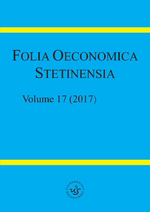Cumulative incidence function in studies on the duration of the unemployment exit process
Cumulative incidence function in studies on the duration of the unemployment exit process
Author(s): Beata Bieszk-StolorzSubject(s): National Economy, Business Economy / Management, Government/Political systems
Published by: Wydawnictwo Naukowe Uniwersytetu Szczecińskiego
Keywords: cumulative incidence function CIF; competing risk; unemployment;
Summary/Abstract: When we analyse the employment seeking process, an event that ends the observation of a given individual is their employment. The remaining observations are considered to be censored: the observations concluded before the end of the study or the cases of deregistering for other causes (e.g. old-age pension, taking up residence in a foreign country, starting further education). The act of taking up income-generating work can take various forms: taking up a job, setting up a business or taking advantage of subsidised job programmes. Jobseekers are often deregistered from poviat labour offices because they refuse to take up an offered job or fail to report to the office in due time. All the above events are forms of competing risk. The purpose of this paper is to use the cumulative incidence function to assess the probability of the unemployment exit with regard to different types of the competing risk. When competing-risk events occur, a solution sometimes is used where the remaining endpoint events are considered censored observations. Such a solution leads to an overestimation of probability. The results implicate that the beneficiaries’ will to find employment was not a principal reason for a registering decision. The study is based on the individual data of jobseekers registered in the Poviat Labour Office in Szczecin.
Journal: Folia Oeconomica Stetinensia
- Issue Year: 17/2017
- Issue No: 1
- Page Range: 138-150
- Page Count: 13
- Language: English

